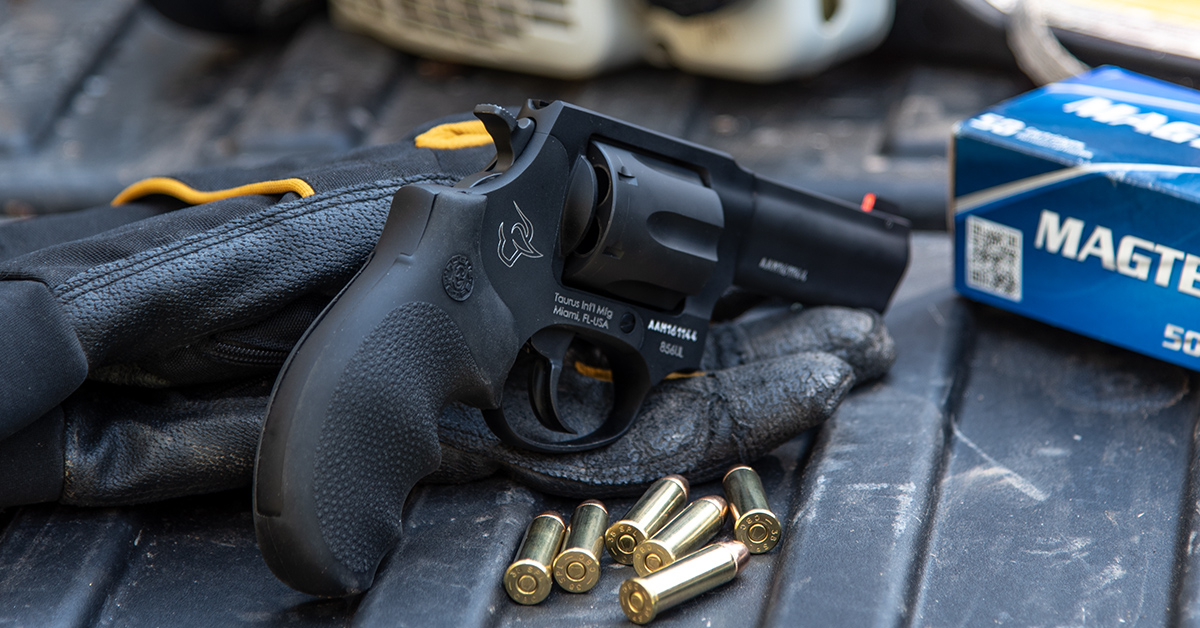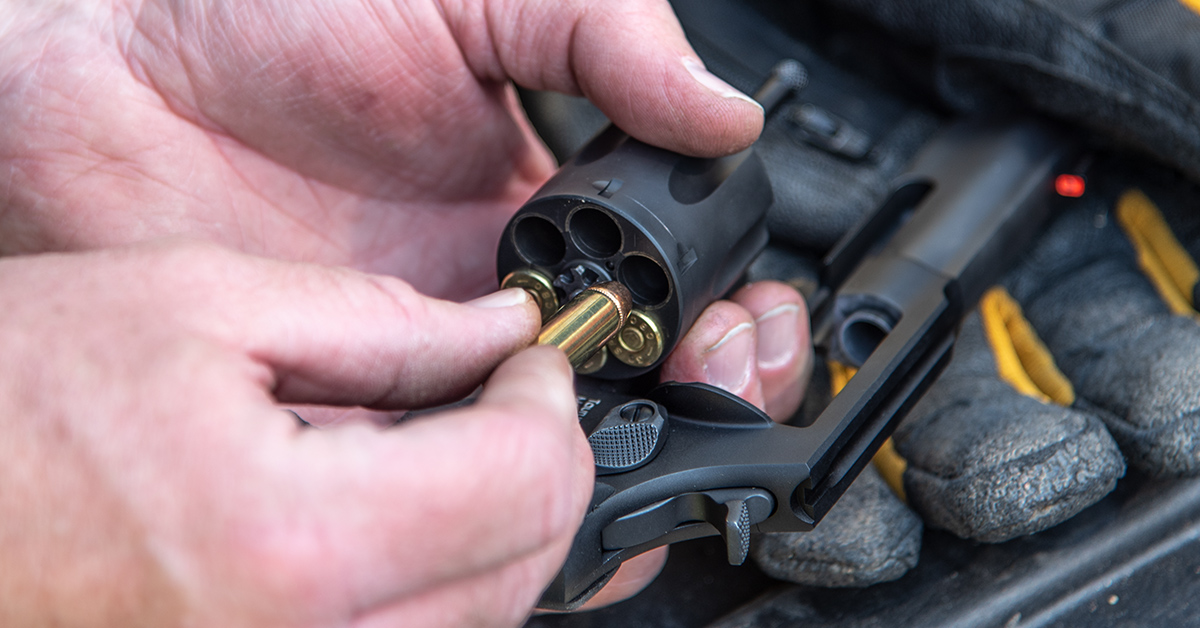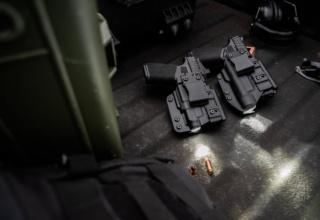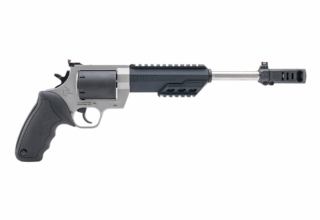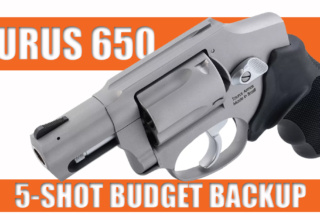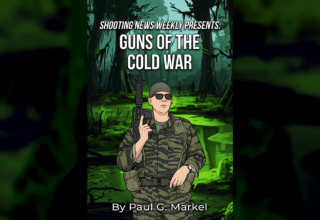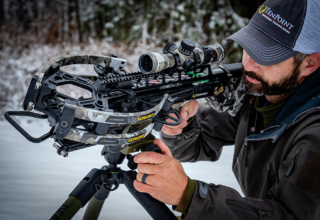New EDC/CCW practitioners have a big choice to make. Here are some thoughts to consider.
by Rob Reaser
If there is one thing everyone who has been engaged with firearms beyond a casual relationship knows, it is that opinions are legion no matter the topic. From what is the best sight system to the best caliber to the best bullet to the best holster to the best… You get the idea.
While varied opinions on absolutely every facet of shooting and firearms keeps spirits and passions running high at gun ranges, hunting camps, and firearms retailers across the country, the “In my opinion” type of discourse often serves to confound the first-time or relatively new gun owner or the prospective gun buyer. Such confusion sometimes leads to poor product choices. That leads to frustration, sets a big hurdle in the learning curve, and even can lead to the abandonment of regularly carrying a firearm for personal defense—something we all want to avoid causing for new members in our ranks.
We can go down innumerable rabbit holes when discussing the minutiae of shooting paraphernalia, but it is all for naught if the new shooter can’t cover first base. That means selecting a gun that delivers high on ergonomics, ease of operation, reasonable accuracy, and the expected terminal performance, but also in promoting confidence and allowing the bearer to feel comfortable carrying their firearm through their daily routine.
The biggest challenge begins with the question, “Revolver or semi-auto pistol?”
Now, don’t think this is a revolver-vs-pistol type of article. Those serve no purpose other than to conflate opinions. What we want to do is give the prospective new personal defense handgunner some areas to consider when looking for a gun to carry daily. That discussion begins with understanding that there is no right or wrong gun; there is only the gun that is right for you. That may sound a bit vague, but it strikes to the heart of the discussion. Regardless of a gun’s virtues, if it doesn’t fit, if you are not comfortable carrying and shooting it, or if it is difficult to operate or to shoot accurately in a stressful situation, then it is not the right gun for you. It might be perfect for someone else, but that matters not. Our objective here is to provide you with aspects of revolvers and pistols to consider when looking for that just-right gun for YOU.
Revolvers, aka “Wheel Guns”

Many first-time shooters gravitate toward revolvers for one reason—ease of use. Although the mechanical nature of a revolver’s action is quite ingenious and sophisticated from an engineering perspective, the operation of a revolver is about as simple as it gets. Cartridges are loaded in the cylinder and the cylinder is closed. Pull back the hammer, squeeze the trigger, and the cartridge fires (single-action), or just pull back the trigger to fire the gun (double-action).
For the beginner handgun shooter, the DA/SA (double-action/single-action) revolver presents a fairly shallow learning curve because the cycle of operation is straightforward. Pull the trigger, the cylinder rotates, the hammer drops, and the gun goes BANG. Release the trigger and you are ready for the next shot. For a defensive firearm that will be deployed in a high-stress situation, that simplicity of operation is a big deal. The less you must think about the better you can focus on eliminating the threat with efficiency.
In most personal defense deployments, a revolver will likely be used in double-action mode. This means pulling the trigger to fire the gun rather than cocking the hammer and then pulling the trigger to fire. What the prospective revolver buyer must be cognizant of, though, is the effort required to fire the gun in double-action mode.
Some revolvers come with a stiff trigger pull weight, and this may be problematic for smaller-frame shooters or those with weak hand/finger muscles. The length of the trigger pull and the configuration of the grip can also play a part in the effort required to shoot a revolver in double-action mode. What is happening in double-action is that the pull of the trigger is both cocking and finally releasing the hammer. This dual action means a long, stiff trigger pull. For this reason, it is recommended that you spend time dry-firing or live-fire shooting a candidate revolver before purchasing it. Although practice will usually mitigate and ultimately eliminate any discomfort or awkwardness of shooting a revolver with a robust trigger pull weight, for some shooters, a too-heavy pull weight might not be effectively overcome.
Shooting a revolver in single-action mode, wherein the hammer is cocked back and then a short, light tug of the trigger releases the hammer to strike the cartridge primer and fire the gun, is easy for most folks—even smaller, weak-handed shooters. So, why not just cock the hammer before firing? That works great when target shooting, but it is rife with pitfalls in a defensive encounter. Cocking the hammer is another step to take in a situation where fractions of a second can, literally, mean the difference between life and death. Then there is the potential issue of fumbling due to stress, accidental discharge due to stress, safely de-cocking the hammer (if the gun wasn’t fired) while still under stress. The list is long and offers plenty of reasons why single-action mode (cocking the hammer) is best left to slow-fire target shooting.
Since double-action firing is the best choice for deploying a revolver in a defensive situation, that means the shooter must practice and become proficient at hitting their target in double-action mode. That takes a lot of practice because the heavy pull weight and long length of pull inherent to double-action revolver shooting tends to induce all manner of shot disturbances that must be controlled. This is one of the big reasons why short-barrel, carry-size revolvers are considered short-range engagement weapons.
Capacity and reloading speed are two more considerations with regards to revolvers. Most revolvers chambered for the .38 Special (the most popular defensive revolver caliber) feature a 6-round cylinder. Some smaller or ultralight models may only have a 5-round cylinder. In nearly all personal defense situations, that’s ample ammunition to neutralize or deter the threat and retreat to safety.
Should you desire more ammunition capacity for your daily carry needs, speed loaders provide an option. As with becoming proficient shooting in double-action mode, reloading a revolver, even with a speed loader, takes practice to do it efficiently in a high-stress situation but it will never be as fast as changing a magazine in a semi-auto pistol. That is just a fact of biophysics.
As for carrying, many find small-frame, compact, and ultralight revolvers to be easier to carry than pistols. Their smooth contours and sleek profile lend themselves to carrying in the pocket, purse, or deeply concealed in the waistband when used with an IWB (inside waistband) holster.
Bottom line: revolvers are simple to operate and not prone to malfunctions due to that same simplicity, but they do require ample practice to shoot accurately in double-action mode.
Pistols, aka “Semi-Autos”
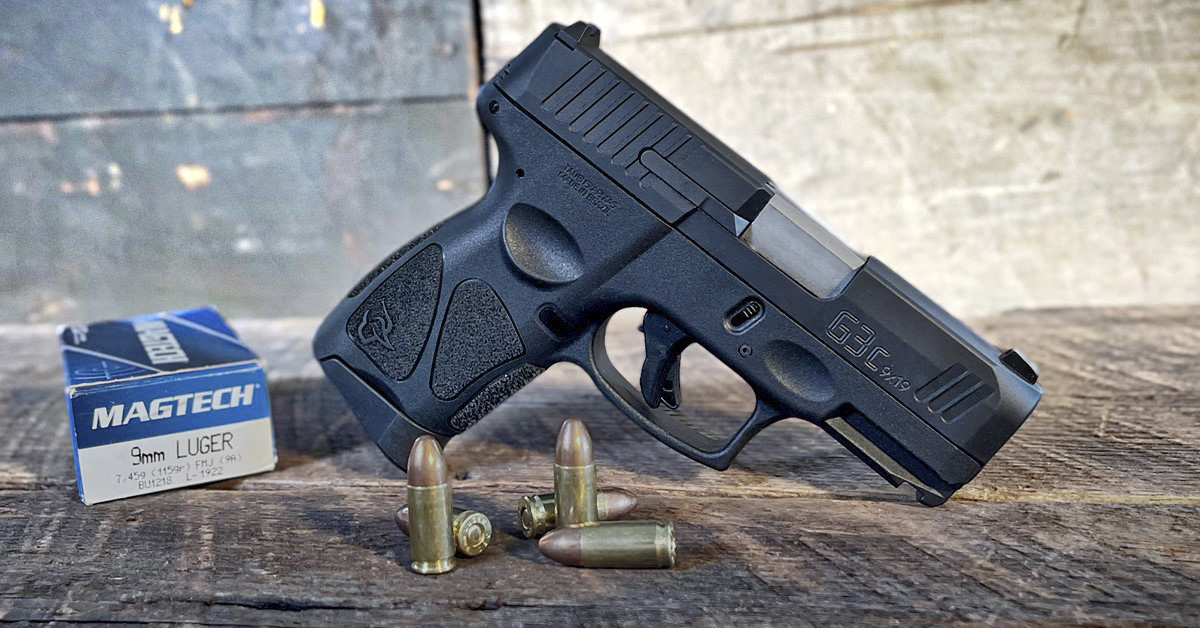
By far, semi-auto pistols are the most popular choice for EDC/CCW applications. The primary reason for this is their high ammo capacity relative to that of revolvers. Most compact and micro-compact pistols today can typically carry anywhere from seven or eight rounds in a magazine to as much as 13 rounds. Combine that with the fact that a spare magazine of equal capacity can be swapped with an empty in under two seconds and it is easy to understand why pistols are the go-to for most personal defense practitioners in this country.
With the semi-auto platform, though, comes a level of complexity not seen with revolvers. To fire, the pistol must first be charged by pulling back on the slide assembly and releasing to seat a cartridge in the chamber. The gun may also have a manual safety lever that must be disengaged (if already engaged) before firing. When the last round in the magazine is fired, the slide on most pistols will lock open, requiring the shooter to depress the slide release lever after inserting a new magazine to chamber a cartridge.

Pistols, by virtue of their reciprocating slide assembly, are also more complicated (although not difficult) to clean, requiring the slide assembly to be removed from the frame/receiver and then the recoil spring assembly and barrel to be removed from the slide. While this is not a difficult process, it is a process that is essential for the pistol shooter to master.
The reciprocating slide is part of the pistol’s cycle of operation. When the gun is fired, the slide moves back to eject the empty case, stripping the next round from the magazine and seating that round in the chamber so the gun can be fired again. It is a design that works extremely well, but it does demand some technique on the part of the shooter to function as intended. Inconsistencies in the way the shooter holds the gun, for example, can disrupt the cycle of operation and cause a malfunction.
We often see this in new shooters who have not mastered proper grip and shooting form. The slide needs firm resistance from the shooter to cycle fully rearward. Failure to maintain a firm grip or to keep the strong arm (firing hand) pushed forward against the recoil can lead to a failure to eject or a failure to feed a cartridge. While not critical on the target range, such malfunctions can be catastrophic in an actual defensive engagement because the shooter must first correct the malfunction before reengaging the threat. This is why malfunction drills were developed, so that shooters learn to quickly and efficiently clear malfunctions and get back into the fight.
Aside from the clear advantage of greater ammo capacity when compared to revolvers, the pistol is generally “softer” to shoot than a revolver. The reason is simple physics. With a revolver, the full force of the recoil (the equal and opposite reaction of gas propelling the bullet forward and the gun backward) is absorbed by the shooter’s firing hand. For some revolvers, cartridge loads, and grip designs, this can equate to a sharp “bite” in the palm and a sore hand after several rounds fired. In contrast, the recoil spring and reciprocating mass of the pistol slide absorbs a great deal of a pistol’s recoil energy, significantly reducing hand shock and providing a more comfortable range experience.
Another benefit of the semi-auto striker-fired pistol is the ease of trigger operation. Once charged and cocked, the trigger is easily pulled rearward (compared to a double-action revolver). After the gun fires, it automatically ejects the empty case and loads a new cartridge, permitting the shooter to move the trigger slightly forward to the reset position. This reset distance is short on a single-action-only (SAO) pistol, reducing the potential for shooter-induced shot disturbance and facilitating rapid firing. Should putting lead downrange quickly and with a high accuracy potential be your goal, the SAO pistol stands ready.
If carrying concealed is your intent, smaller is always better with pistols. The nature of a pistol’s large slide footprint and the necessarily squarish profile of the grip (to accommodate large-capacity magazines) tend to make them “print” more easily beneath street clothes than small revolvers. The flip side to sub-compact and micro-compact pistols, though, is that they can be a challenging grip for shooters with large hands. Some of the newer generation micro-compact pistols, however, like the Taurus GX4 seen here holstered in Crossbreed’s The Reckoning, provides a surprisingly ergonomic grip for most hand sizes despite the reduced grip acreage.
Again, it all comes down to finding the gun that feels best and works for your intended needs and lifestyle. Whether pistol or revolver, compact or micro, IWB or OWB carry…choosing a defensive pistol is a highly personal matter and we recommend taking any prospective purchase for a test drive on the range before trading cash for gun.

